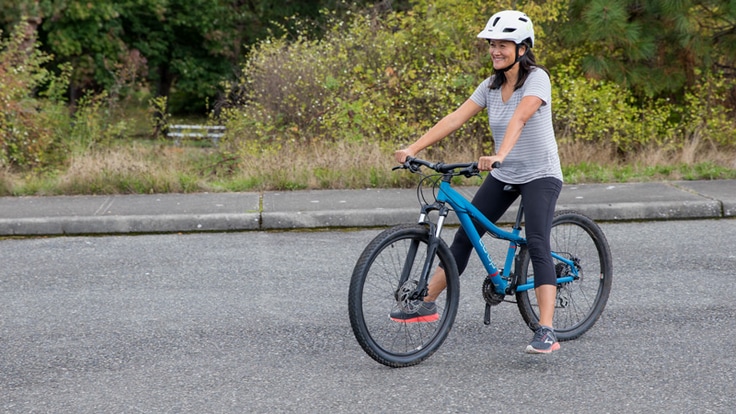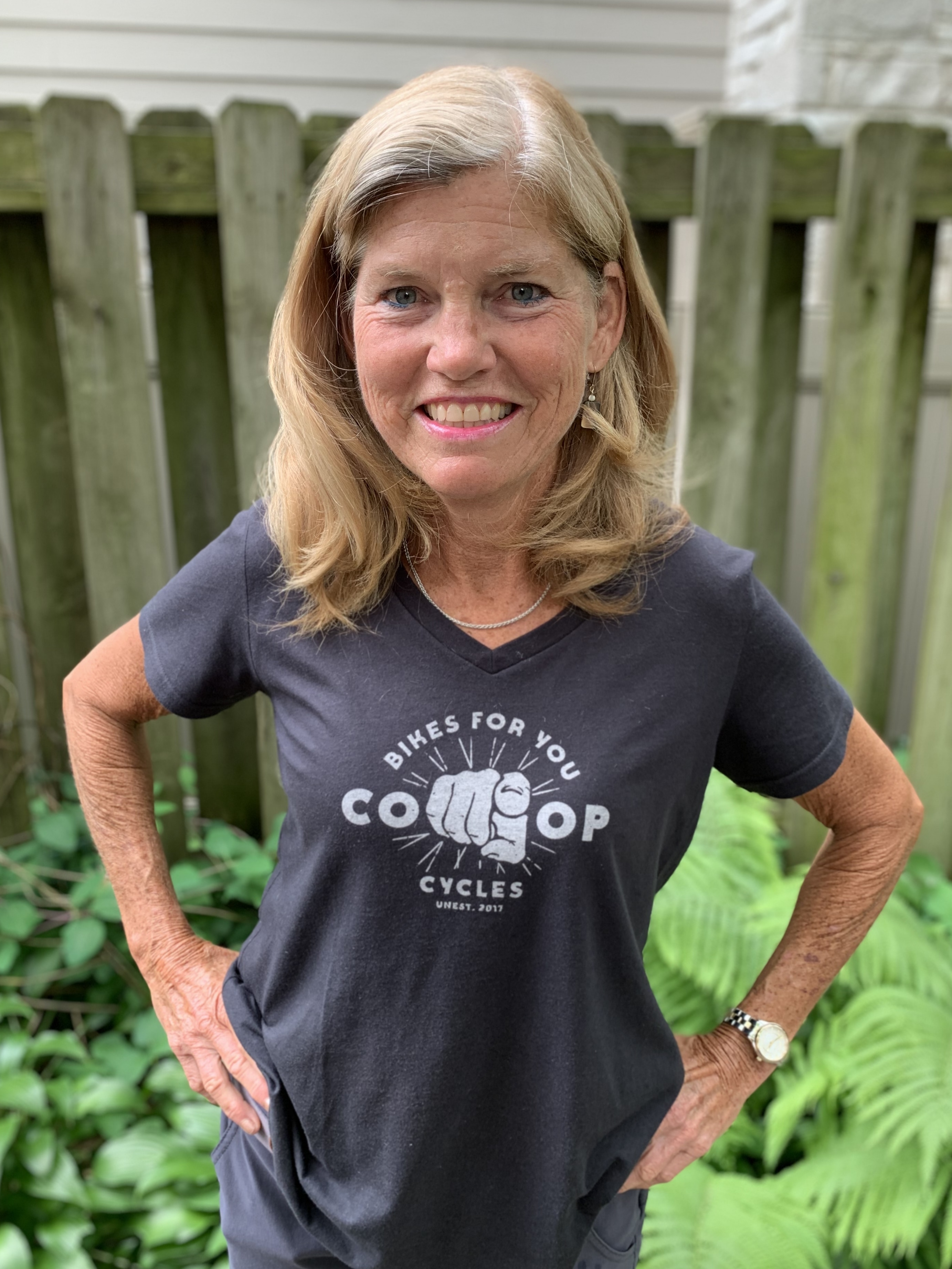If you never learned to ride a bike as a kid, you're not alone and you're not too late. In this article, we'll guide you through some simple steps to help get you rolling and build up your confidence on two wheels.
Before you get started learning to ride, here are some things to keep in mind:
- Be patient: Don't try to force the process. If you find yourself getting tired or frustrated, take a break and come back to it later. Shorter, more focused practice sessions may be a better approach than trying to do too much all at once.
- Don't give up: You may not learn to pedal right away, but with continued practice, you'll get it. Remember that each time it's going to get a little bit easier.
Watch the Video
Get Ready to Ride
Before you learn, make sure you have the right gear.
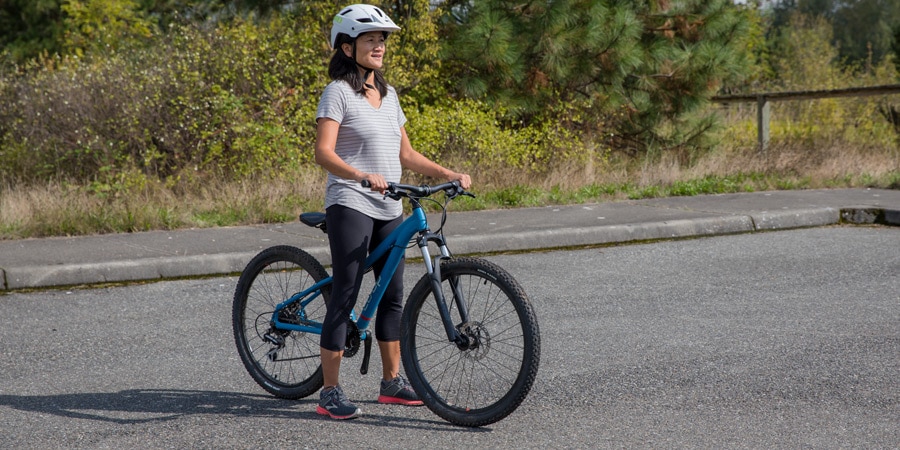
Find a bike that fits you: You should be able to straddle your bike with your feet flat on the ground and your crotch at least a couple inches above the frame. A bike that's comfortable will be easier to steer and control. For more, read our article on Bike Fitting Basics.
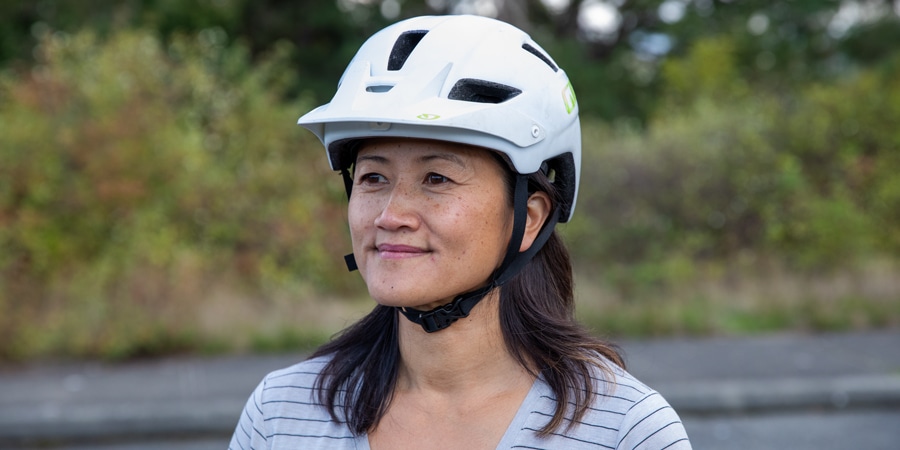
Make sure your helmet fits: A good-fitting helmet should be snug but not too tight. It should sit level on your head (not tilted back) with the front edge one inch or less above your eyebrows so your forehead is protected. For more information, read our article How to Choose Bike Helmets.
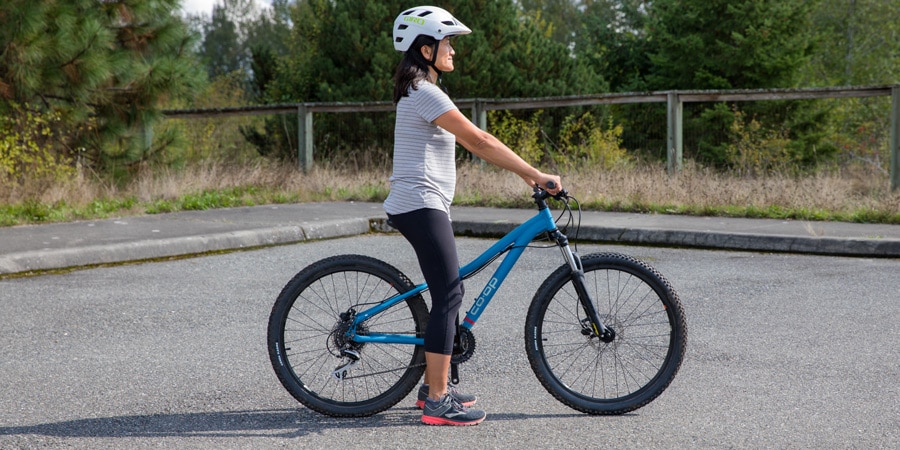
Remove the pedals and lower the seat: You should be able to sit upright on the seat with both feet flat on the ground. Most adults learning to ride for the first time are scared of falling—being able to put your feet down to balance helps build confidence. (Note: Pedals can be removed most easily using a pedal wrench.)
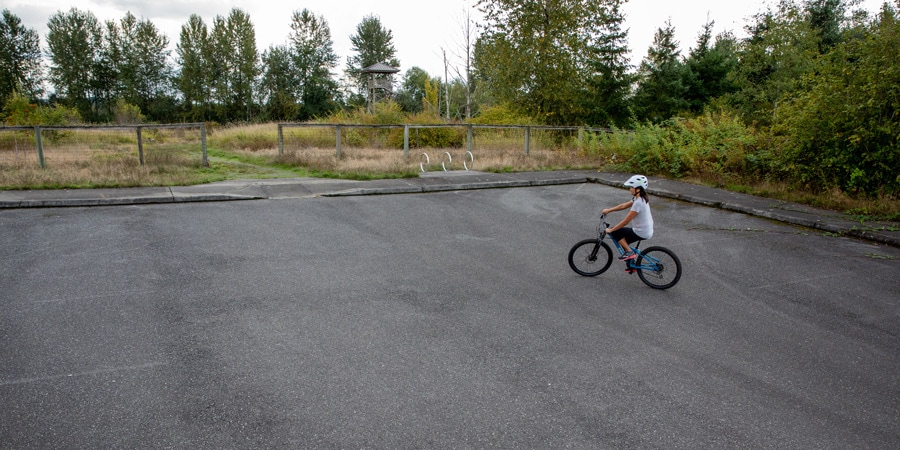
Find a flat, open space to learn: Find a paved area that is large and flat, such as an empty tennis or basketball court or a parking lot. Avoid grassy areas because you won't be able to get enough speed on them to learn to coast and glide.
Practice Getting On and Off the Bike
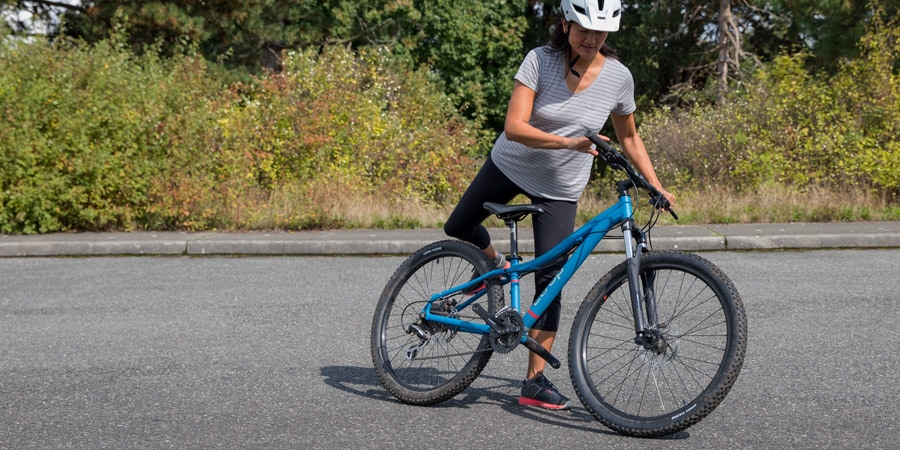
Once you set up your bike, it's a good idea to practice getting on and off of it. Stand on one side of the bike and lean it toward you to make it easier to straddle. Do it several times until you're comfortable.
Learn to Brake
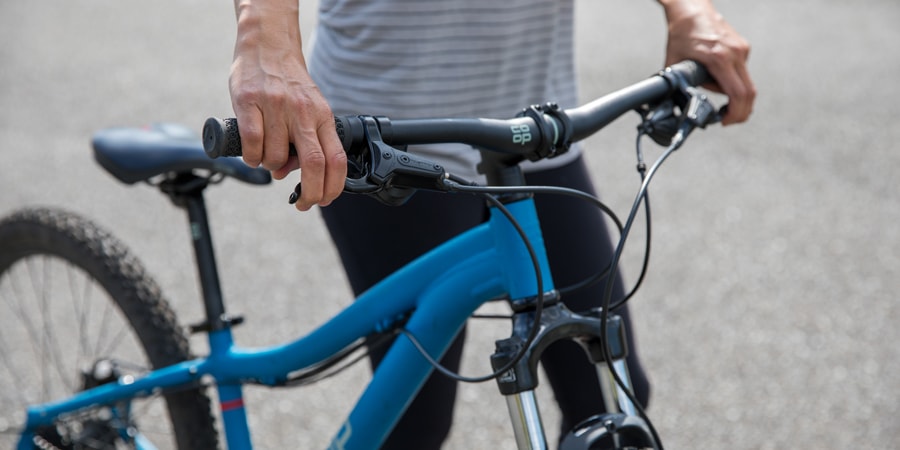
Next, while off your bike, practice using the hand brakes to a get a feel for how much pressure it takes to slow down or stop. Walk alongside your bike and squeeze the brakes part way to slow down. Make sure you squeeze the front and rear brakes at the same time. Next, try to do a smooth, controlled stop that's not jerky or too abrupt. Practice stopping every 15 to 20 feet until you can do so smoothly.
Learn to Coast Without Pedals
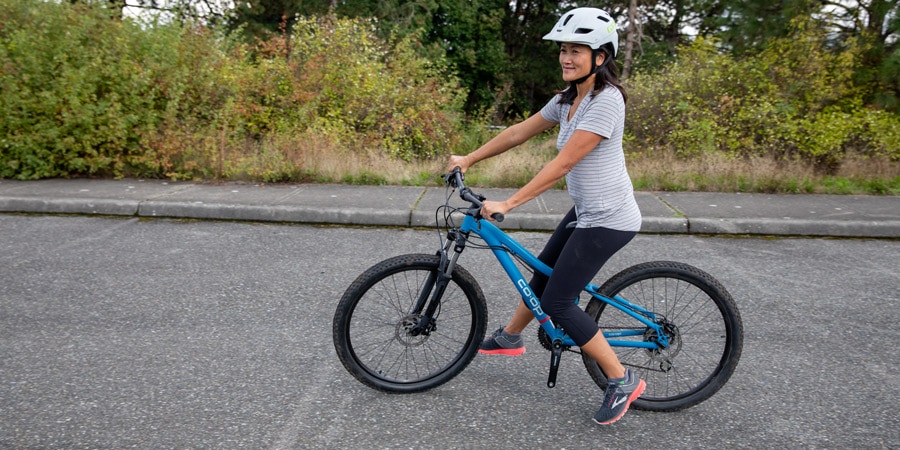
Now it's time to get on the bike and learn to coast without using pedals. While seated, take small steps so you're moving forward on your bike. Then take longer "running" strides where you reach one foot forward as if you're running. Practice this several times.
As you get more comfortable with these "running" steps, try to get more speed and then pick up your feet if you can—even if it's for a second or two. Get a feel for how to balance. Keep practicing this, trying for longer stretches where you're able to pick up your feet and balance on the bike. It will be much easier to balance if you get a little bit of speed going.
Steering while coasting: As you learn to coast for longer periods of time, practice turning to the right and left. Eventually try doing large figure eights, making wide turns in both directions.
Tips:
- Look up and forward toward where you want to go.
- Try to keep your body upright.
- Place your feet on the ground if needed. (It's important that your bike isn't too big and that you can place your feet flat on the ground.)
Learn to Pedal
When you've gotten the hang of balancing and steering for longer periods, it's time to put the pedals back on the bike. For now, keep the seat in its lowered position so you can still put both feet on the ground to stop.
Pedaling from a Stopped Position
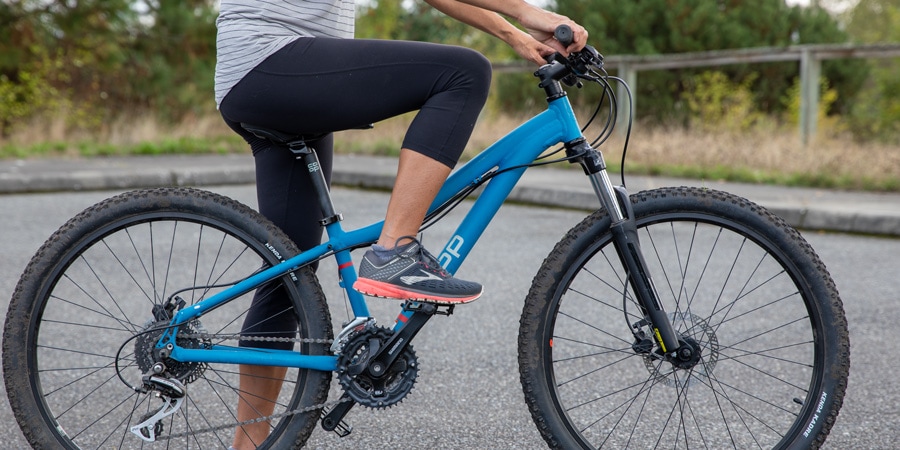
With the pedals back on the bike, it's time to learn how to move from a stopped position. There are several strategies to do this. (If your bike has gears, make sure it's in a low gear.)
- Sit on the seat with one foot flat on the ground and the other on a pedal raised at the 1- to 2-o'clock position. (You won't have enough momentum if the pedal is too level.) Press down hard on the pedal in the high position. This pressure will give the bike its forward momentum.
- Another option is to start with one foot on a pedal in the down position and use the other foot to scoot, as you would on a scooter. Take a scooter step to get some speed and then find the second pedal.
- A third way is to use both feet at the same time and try scooting forward before finding the pedals and putting both feet on them at the same time.
Tips:
- Try not to look down at your feet because that tends to throw your balance off.
- If you're looking up and don't find the pedals with your feet right away, you can always step down. Don't panic!
Steering and Turning
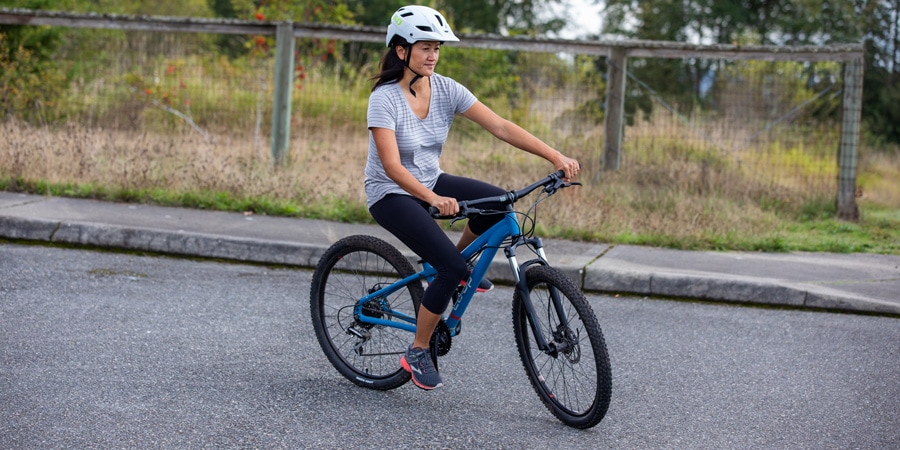
Once you're able to pedal a bike for longer stretches of time, practice turning and steering. Try doing figure eights. Turn wide first and then make smaller turns. Generally, most people find turning to one side is much easier than the other.
Tip: As you're learning, try not to pedal through the entire turn or you'll go too fast to make a controlled turn. Anticipate the turn, ease off the pedal and coast, make the turn and then pedal when you come out of that turn.
Learning to ride a bike takes time. You may not be fully riding in one day, but with continued practice you can do it! You too will reach that "a-ha" moment where it all comes together and you'll be pedaling.
